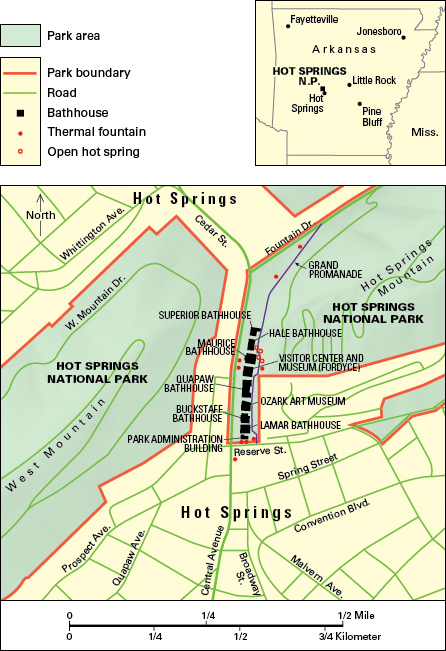Hot springs are springs that discharge water heated by natural processes within Earth. Most hot springs are steadily flowing streams or calm pools of water. However, some are fumaroles. Fumaroles are holes in the ground or vents that give off steam mixed with volcanic gases. Other hot springs are geysers, springs that throw up hot water with explosive force from time to time. Still other hot springs are bubbling pools of mud known as mudpots. Hot springs are also called thermal springs. See Fumarole ; Geyser .
Loading the player...Geysers
Hot springs originate when water from rain and snow seeps into the ground. Many springs occur in volcanic regions. In volcanic areas, hot molten rock called magma lies near the surface. Surface water trickles down through layers of rock until it is heated by the magma. Then the water rises to the surface through channels in the rock.

Hot springs also occur in regions that have faults (breaks) or folds (bends) in the layers of rock beneath the surface. The temperature of Earth increases toward the interior. Faults and folds enable surface water to penetrate to depths where it is heated.
Many people believe that certain minerals found in some hot springs can relieve various ailments. Since ancient times, this belief has led people to bathe in the springs and to drink the water. Famous resort communities have developed around hot springs. Such resorts include Hot Springs National Park in the United States. Others are Aachen, Baden-Baden, and Wiesbaden in Germany.

Most fumaroles occur in inactive volcanic regions, such as Yellowstone National Park. That park also has at least 200 active geysers and many mudpots. Other mudpots are in New Zealand and Iceland.
Hot springs are a source of geothermal energy. Geothermal energy is produced by underground steam or hot water. Several countries use geothermal energy to generate electric energy. The largest source of electric energy produced from geothermal energy is a generating facility at the Geysers steam field in northern California.
